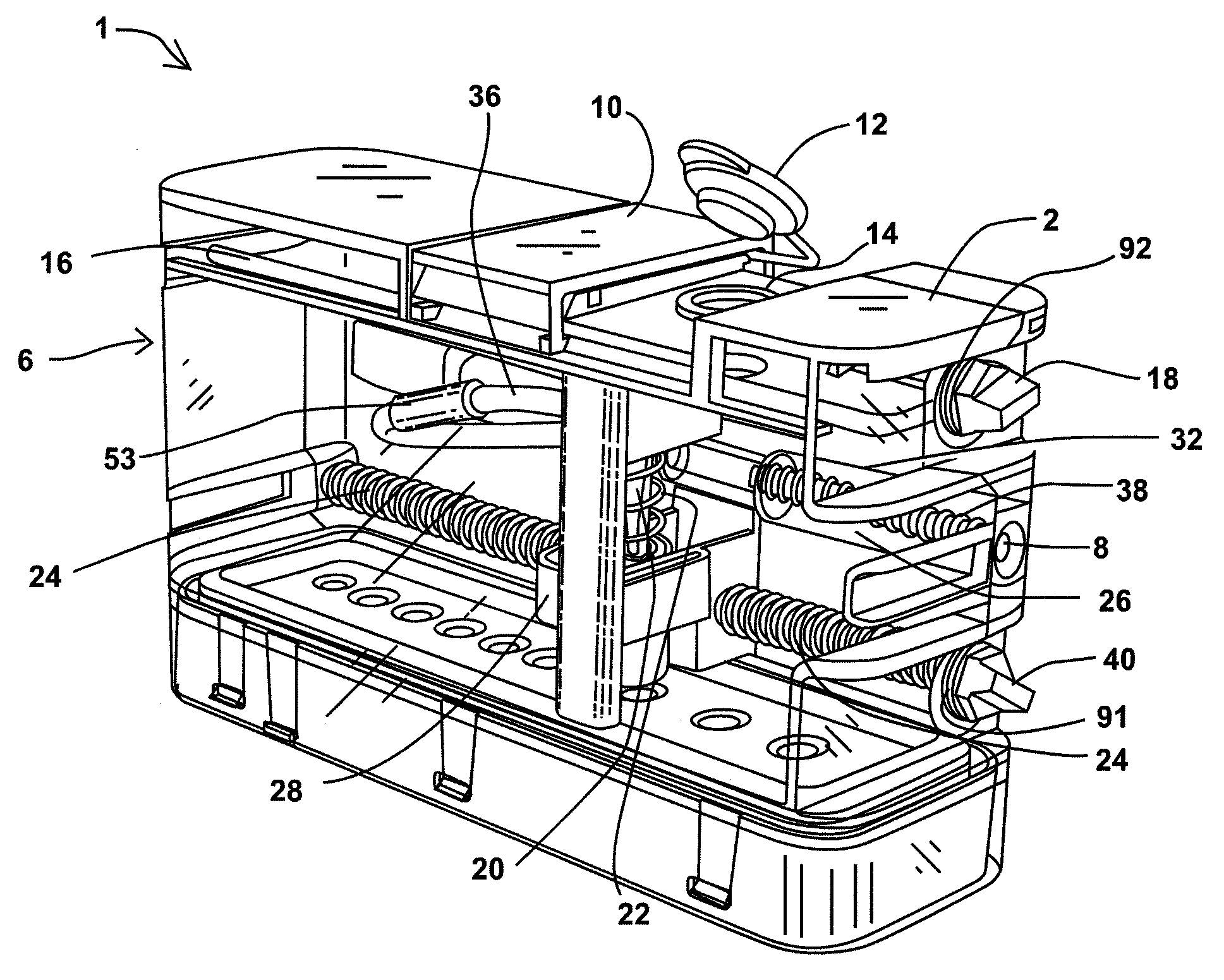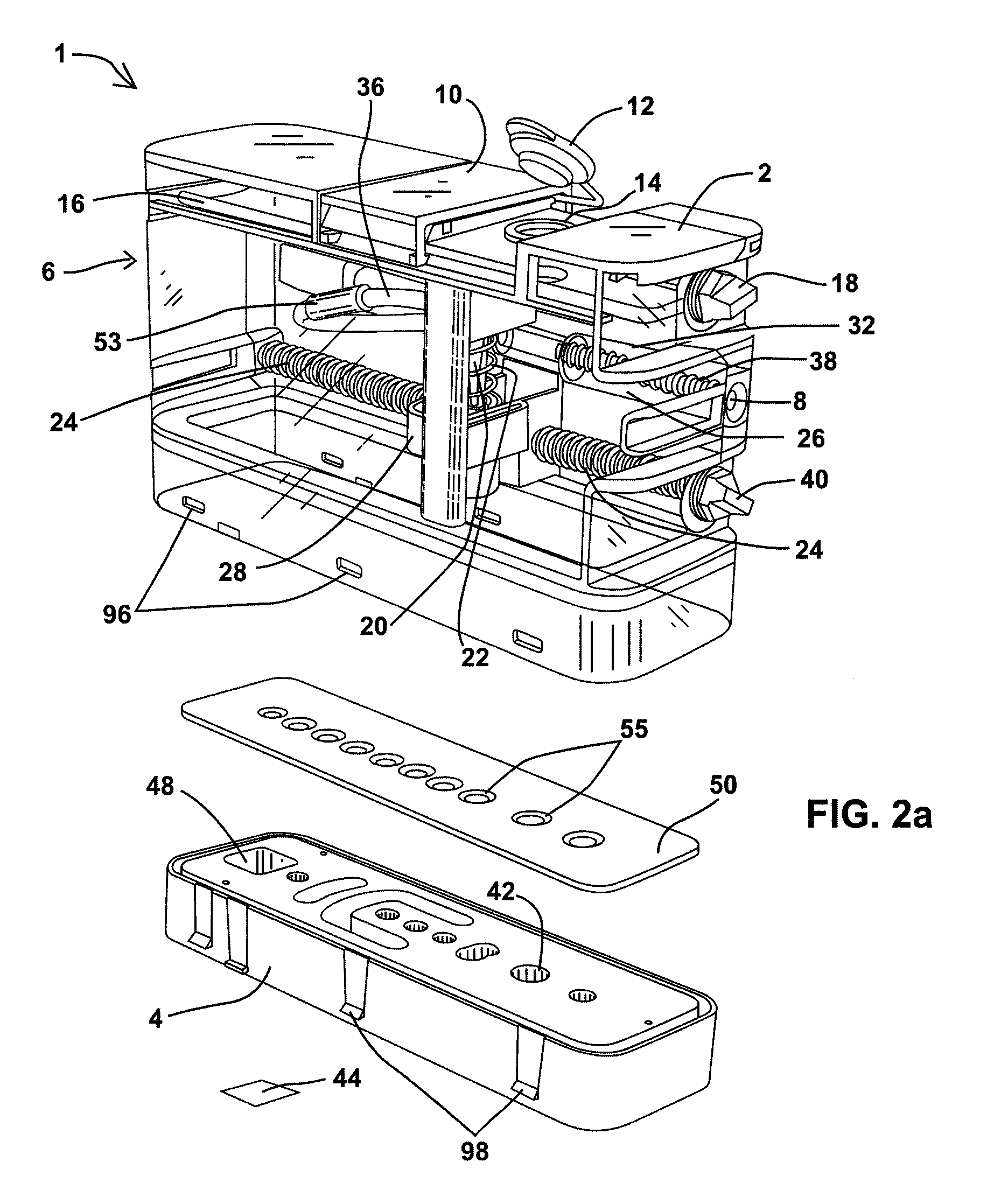Apparatus for Performing Amplicon Rescue Multiplex PCR
a technology of amplicon and multiplex, applied in the field of amplifying nucleic acids, can solve the problems of difficult to amplify multiple sequences from a single sample, take days, and the use of pcr for molecular differential diagnostic (mdd) assays presents several challenges
- Summary
- Abstract
- Description
- Claims
- Application Information
AI Technical Summary
Benefits of technology
Problems solved by technology
Method used
Image
Examples
example
[0052]A user opens the filler cap on the cassette and inserts a pipette tip into the cassette through the filler port to deposit a 5 microliter sample into the PCR chamber. The pipette is then withdrawn and the filler cap is sealed. The cassette is snapped into the base unit.
[0053]Installation of the cassette contacts the cassette parts with the cam bar rotational interface, the pump push rod linear motion interface, and the lead screw rotational interface. The detector cover door latch is tripped, releasing the cover door (if utilized) so it can slide out of the way, exposing the cassette's microarray to the base unit. When the base unit detects the cassette, it automatically reads a barcode label on the cassette. The base unit will verify that the correct cassette has been loaded for the type of test to be performed. The base unit then engages the heater units for the PCR thermal cycler and the optical / heater for hybridization and detection. The heaters are moved upward by the bas...
PUM
| Property | Measurement | Unit |
|---|---|---|
| Vacuum | aaaaa | aaaaa |
Abstract
Description
Claims
Application Information
 Login to View More
Login to View More - R&D
- Intellectual Property
- Life Sciences
- Materials
- Tech Scout
- Unparalleled Data Quality
- Higher Quality Content
- 60% Fewer Hallucinations
Browse by: Latest US Patents, China's latest patents, Technical Efficacy Thesaurus, Application Domain, Technology Topic, Popular Technical Reports.
© 2025 PatSnap. All rights reserved.Legal|Privacy policy|Modern Slavery Act Transparency Statement|Sitemap|About US| Contact US: help@patsnap.com



